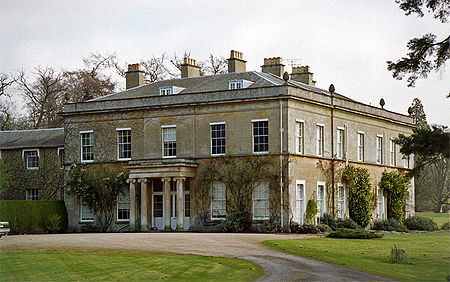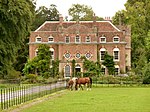Redenham Park

Redenham Park is an estate in the civil parish of Appleshaw,[A] Hampshire, England, surrounding Redenham House, an 18th-century Grade II* listed country house.The house was built in 1784 for Sir Charles Pollen and is a classical mansion faced with Bath stone, standing to two storeys with a slate roof and sash windows, and a central porch with coupled Ionic columns.It descended in the Pollen family via Sir John Pollen, 2nd Baronet to the latter's great nephew Sir Richard Hungerford Pollen, 4th Baronet. In the late 19th century the house was occupied by Major A.W.Fulcher, a well-known cricketer and yachtsman. From 1976 the house and estate belonged to Sir John Clark, the chairman of Plessey. It is now occupied by his widow, Lady Olivia Clark. The park and gardens have been described as 'the perfect setting for a Jane Austen novel'. They comprise 2.5 hectares of garden, 24 hectares of parkland, 36.5 hectares of woodland and 337 hectares of farmland. The gardens are featured in The Good Gardens Guide and are open to the public by appointment.
Excerpt from the Wikipedia article Redenham Park (License: CC BY-SA 3.0, Authors, Images).Redenham Park
Privet Lane, Test Valley Appleshaw
Geographical coordinates (GPS) Address External links Nearby Places Show on map
Geographical coordinates (GPS)
| Latitude | Longitude |
|---|---|
| N 51.243 ° | E -1.58 ° |
Address
Redenham House
Privet Lane
SP11 9AT Test Valley, Appleshaw
England, United Kingdom
Open on Google Maps




